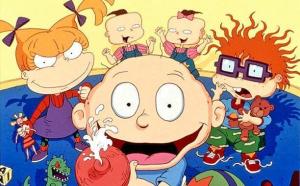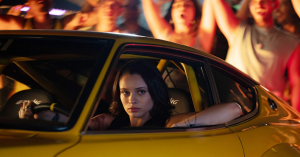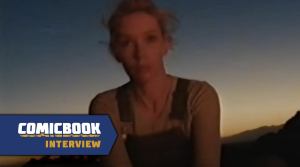Back in the summer of 1975, Steven Spielberg unleashed Jaws upon audiences worldwide, based on the novel of the same name by Peter Benchley. While the production was mired in challenges, the popularity of the film helped coin the term “blockbuster,” referring to the lines for the film wrapping around the corners of sidewalks for a movie theater. In May of 1977, George Lucas’ Star Wars ignited a similar phenomenon, with two follow-ups then creating an entire trilogy of blockbusters. Between students being out of school, adults being on vacation, and movie theaters merely just offering air conditioning, Jaws kicked off a still-present trend of Hollywood delivering immensely popular blockbusters in the summer months.
Throughout the ’80s, movies like Raiders of the Lost Ark, E.T. the Extra-Terrestrial, and Back to the Future also offered audiences action and excitement in the summer months, but it is arguably the ’90s that saw a major pivot from nominal crowd-pleasers to big-budget spectacles. Part of what would define this era of the summer blockbuster is that Hollywood was so invested in style over substance that there are a number of failed attempts at creating blockbusters, even if they had the makings of promising stories or recognizable talent.
Videos by ComicBook.com
When reflecting on the “best” summer blockbusters of the ’90s, it’s worth noting that these types of films occupy a specific space in the cultural landscape. While a film like Saving Private Ryan had a large budget, a star-studded cast, and was critically lauded, it doesn’t scratch the same itch as films about wise-cracking heroes tackling intergalactic threats. In fact, even attempting to point out some honorable mentions would result in nearly triple the number of films in the top 10, signifying just how challenging it was to narrow down the impressive field.
Scroll down to see our picks for the top 10 summer blockbusters from the ’90s, in chronological order!
Terminator 2: Judgment Day – July 3, 1991

James Cameron’s The Terminator was a seminal sci-fi film from the ’80s, telling a noirish horror story about a cyborg assassin from the future stalking the woman who would become the mother of John Connor, the man who would save humanity from Skynet. While that film was a grim and gruesome horror story, Cameron returned to the franchise with a more bombastic take on the material that elevated the concept to an entirely new level.
Terminator 2: Judgment Day heightened everything about its predecessor to new levels. Featuring the returns of Arnold Schwarzenegger and Linda Hamilton, the sequel saw the pair unite against a common enemy in Robert Patrick’s T-1000. The years following The Terminator saw Cameron flexing more action-oriented muscles, ultimately crafting a mind-blowing adventure featuring robots, liquid-metal shapeshifters, shotguns, and motorcycle chases. The story itself remains thrilling, but it’s the stunts and explosive action that make it a staple of the genre to this day and cemented Schwarzenegger as a cinematic icon.
Jurassic Park – June 11, 1993
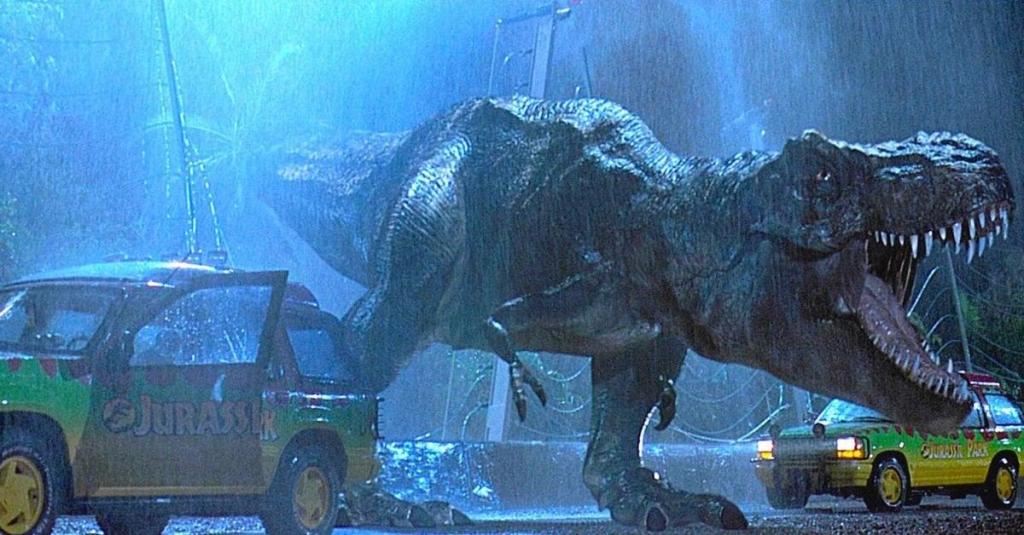
Not only did Steven Spielberg help birth the concept of a blockbuster with Jaws, but he also helped perfect it over the course of his career with Raiders of the Lost Ark and E.T., as well as later works like Minority Report and War of the Worlds. While Jurassic Park wasn’t his first summer blockbuster, it set the stage for a number of imitators in subsequent years.
Based on the Michael Crichton novel of the same name, Jurassic Park blurred the lines between science fiction and actual science, as the story saw dinosaur DNA from fossils being harvested to bring them back to life. What could have been a pulpy B-movie in lesser hands, Spielberg used groundbreaking technology to not only bring these creatures to life in impressive ways, but also remained focused on the heart of the film and the awe-inspiring wonder of the fantastical premise. Jurassic Park became the top-grossing movie of the year on the way to becoming one of the most iconic films of the decade, inspiring copycats like Congo and Godzilla when it came to unleashing action-oriented creature features to summer audiences.
Batman Forever – June 16, 1995
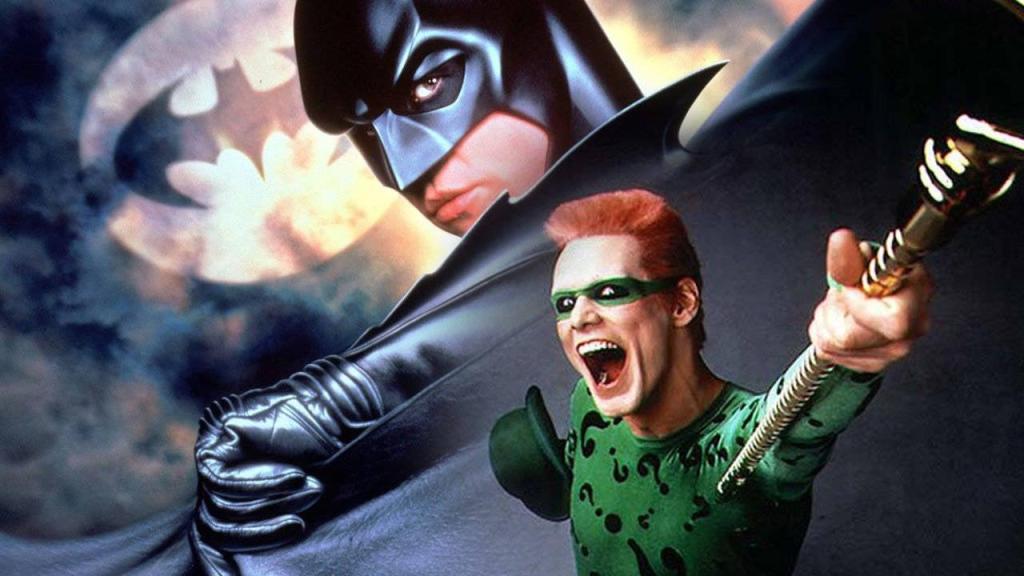
Tim Burton’s two Batman films were both iconic adaptations of the Caped Crusader, but with two hits under their belt, Warner Bros. knew they could bank on this third entry being an even bigger success, resulting in a complete deluge of promotional tie-in opportunities in every market.
Even though the previous two films were summer blockbusters in their own right, Batman Forever saw the big-screen introduction of Robin, while also incorporating the comedic sensation of Jim Carrey as The Riddler, who had huge hits the year prior with The Mask and Dumb and Dumber. With director Joel Schumacher taking the reins from Burton, the overall tone of the film embraced style over substance, and while the sequel’s visuals were striking enough on their own, the film’s soundtrack featured Seal, U2, The Offspring, Brandy, and Method Man, allowing every aspect of Batman Forever to dominate the entire media landscape (for a few months, at least).
Twister – May 10, 1996
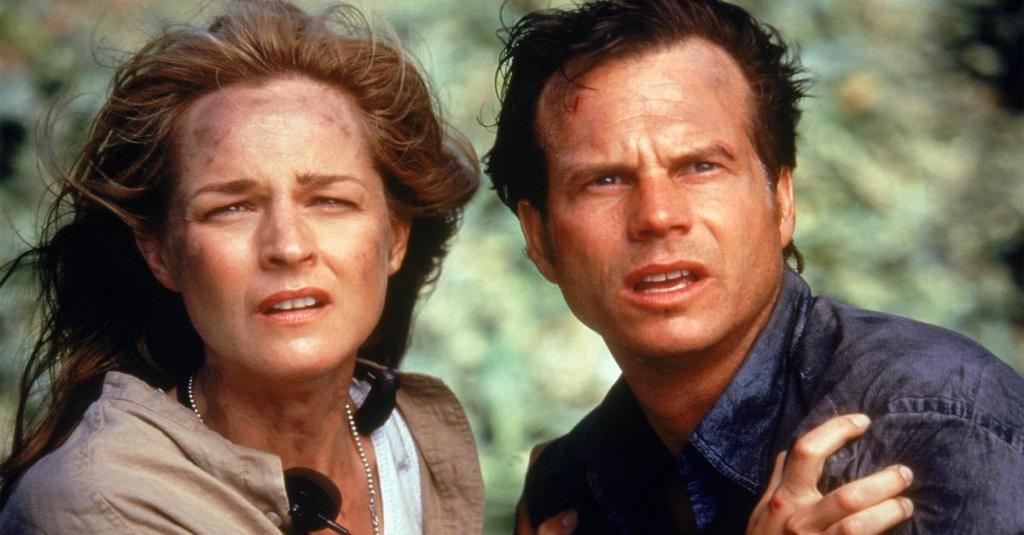
Director Jan de Bont delivered audiences Speed in 1994, helping establish Keanu Reeves as an action star in a film that managed to feel big, despite how much of it was limited to the setting of a speeding bus. From a conceptual standpoint, Speed could be considered de Bont’s biggest success, given how the film has impacted the genre, but in 1996, he embraced advancements in CGI to deliver another experience that was a much bigger spectacle with Twister.
Featuring a hilarious ensemble of charismatic performers, Twister also cashed in on the growing trend of stormchasers, people whose interest in weather saw them putting themselves in death-defying situations in order to capture not only compelling footage, but also important data about these catastrophic events. In years prior, the summer-movie season would start kicking off with Memorial Day weekend, but by opening earlier in the month, Twister was able to set the stage for a thrilling summer full of excitement.
Subsequent releases in 1996 might have overshadowed the high-octane delight of Twister, but that issue will soon be corrected with the upcoming sequel Twisters, which proves the storytelling potential that has been overlooked for years.
Mission: Impossible – May 22, 1996

In the ’90s, the most iconic element from the Mission: Impossible TV series was its theme song, but once the Tom Cruise-starring adaptation landed in theaters, a single image of him dangling from wires became one of the most parodied scenes of the year.
The star power of Cruise brought younger audiences in to see Mission: Impossible, while older crowds might have been more interested in seeing how a relatively mundane TV series translated to the big screen. The debut film used the spy-thriller premise that was earning a boom in the ’90s, but injected with Brian De Palma’s direction and Cruise’s on-screen intensity, this debut entry finds the right balance between style and spectacle to make something that’s a pure delight.
Nearly three decades later and the Mission: Impossible films remain summer staples that push the limits of action filmmaking to new heights, literally and figuratively.
Independence Day – July 3, 1996

The horror franchise might have been more known for delivering films centered around a holiday, but that all changed with Roland Emmerich and Dean Devlin’s Independence Day, which no longer represented a story about one nation seeking their freedom from another, but for an entire planet fighting back against intergalactic intruders.
Much like the characters in the film, Independence Day was less about bringing in Hollywood heavyweights and instead enlisted ragtag talent, with stars Bill Pullman, Jeff Goldblum, and Will Smith bringing their own unique on-screen energy. Having previously had a hit in the realm of sci-fi with Stargate, Emmerich and Devlin brought those high-concept ideas to life with ambitious visual effects, all of which were heightened by the film’s cast and the themes of setting aside differences for the greater good.
Like Jurassic Park before it (which also starred Goldblum), Independence Day became the top-grossing movie of the year, with its premise and setting establishing itself as an annual summer staple. It’s also worth noting that Independence Day, Mission: Impossible, and Twister were the three top-grossing films of 1996, confirming just how much financial potential there was in delivering action-inspired epics in the summer months.
Face/Off – June 27th, 1997

Having already won an Academy Award, Nicolas Cage became a staple of the summer with movies like The Rock and Con Air, both heavy contenders for a spot in the top 10, but with John Travolta having earned a resurgence thanks to his work in Pulp Fiction, it took the combination of these two Hollywood stars to deliver something truly iconic.
Face/Off tells the story of two men, one good and one bad, who swap each other’s identities and faces in order to try to thwart the other in a premise that feels highly absurd, even for the ’90s. Despite the inherent lunacy of the concept, Cage and Travolta, along with director John Woo, never winked at the camera and tackled the material with earnestness in a way that made the concept seem believable.
Face/Off also confirmed that not all summer blockbusters needed to play it safe and aim to appeal to teenagers, as its R rating allowed it to embrace its inherent violence, resulting in a symphony of quips, explosions, and chaotic carnage.
Men in Black – July 2nd, 1997
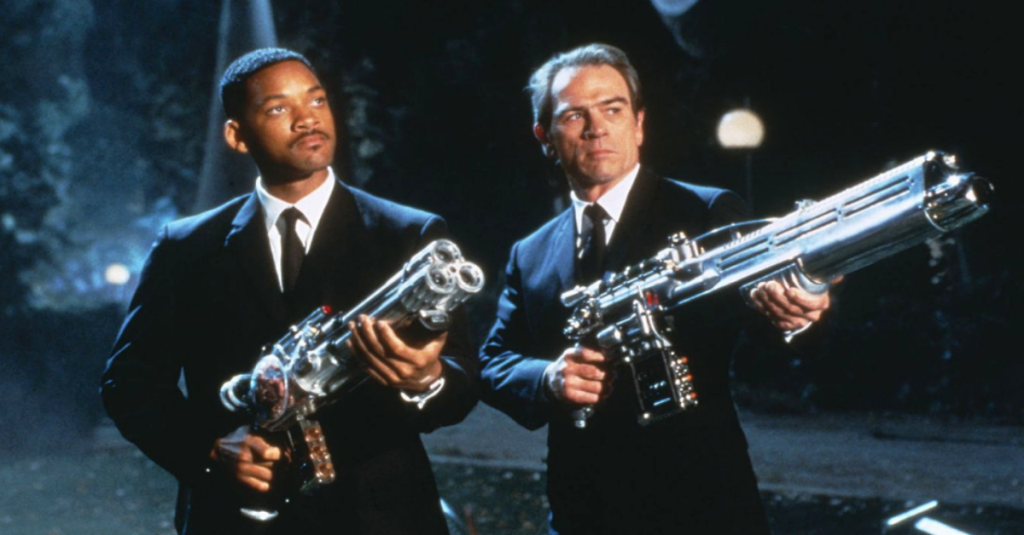
In 1996, the PG-13 Independence Day brought together action, sci-fi, and comedy to become a massive hit in the July 4th weekend, which was replicated with 1997’s Men in Black.
Star Will Smith had dominated TV with The Fresh Prince of Bel-Air and dominated movies with Independence Day, making him one of the industry’s most bankable stars. He was even seeing a resurgence in his musical career, as he recorded a theme song for Men in Black that became one of the songs of the summer, marking two consecutive years in which Smith was a major summer figure in pop culture. By adding Batman Forever‘s Tommy Lee Jones as a surly agent of a secretive organization fighting against otherworldly threats, fans were given an experience that was as funny as it was adventurous, and while it didn’t reach the same financial heights as Independence Day, it was a humongous success that was a crowd pleaser in its own right.
The seeming bankability of Smith in a genre-bending adventure then resulted in 1999’s Wild Wild West, which shared a lot in common with his previous hits, but was ultimately a disaster.
Armageddon – July 1, 1998

While Michael Bay had previously delivered summer audiences The Rock and producer Jerry Bruckheimer offered up Con Air, it was their collaboration on Armageddon that remains a standout of their ’90s offerings.
It could be argued that Armageddon is not just one of the best summer blockbusters of the ’90s, but the most iconic summer blockbuster of the whole decade. Much like Deep Impact earlier in the year, Armageddon explored what would happen if an object from space was hurtling towards Earth, putting the whole planet on the verge of extinction-level damage, leaving it up to Bruce Willis and his crew of oil drillers to land on an asteroid to insert a bomb into the massive mineral.
The movie borrows a world-ending threat akin to Independence Day, the charm of an ensemble cast like Twister, the narrative outlandishness of Face/Off (even Ben Affleck wondered on the home video commentary why astronauts weren’t just trained to drill), and the emphasis on style over substance of Batman Forever to make a movie that sums up the highs (and lows) of action cinema in the ’90s.
The Mummy – May 7, 1999
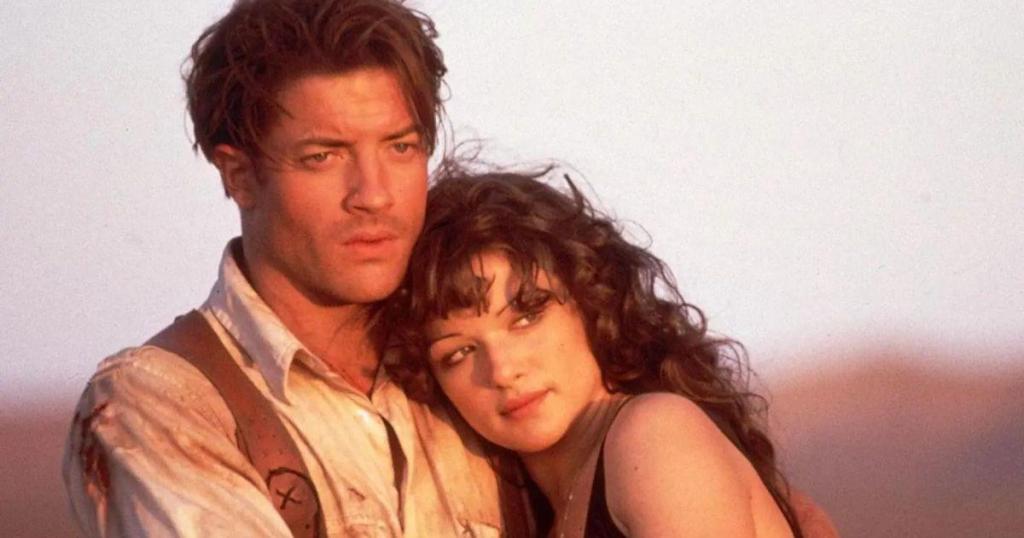
There’s not much connective tissue between 1932’s The Mummy and the Brendan Fraser-starring spectacle, which might ultimately be what made this revival such a success.
Various acclaimed horror filmmakers, from George A. Romero to Clive Barker, had attempted in the ’80s and early ’90s to find the way to reimagine the property, but it wasn’t until Stephen Sommers entered the fray with a pitch about delivering a mix between Indiana Jones and Jason and the Argonauts, combined with the crowd-pleasing spectacle of its peers, that The Mummy came back from the dead.
Part of what makes The Mummy so special is that, in the months leading up to and following its release, the world of pop culture was mainly focused on Star Wars: The Phantom Menace, the first new Star Wars film since 1983’s Star Wars: Return of the Jedi. Given that the galaxy far, far away had years of success both before and after The Phantom Menace, The Mummy stands out from the crowd in what it meant for movies of the decade.
Case in point, even Tom Cruise couldn’t bring The Mummy back from the dead in 2017 with a new reboot, as it failed to find the balance between action and horror as effectively as Sommers did, proving just how effective the swashbuckling period peace remains.
Do you have a favorite summer blockbuster from the ’90s? Let us know in the comments!


